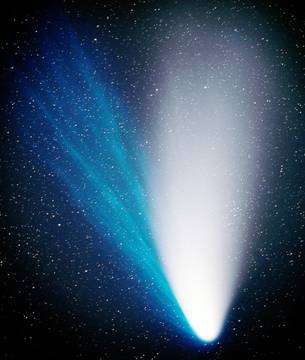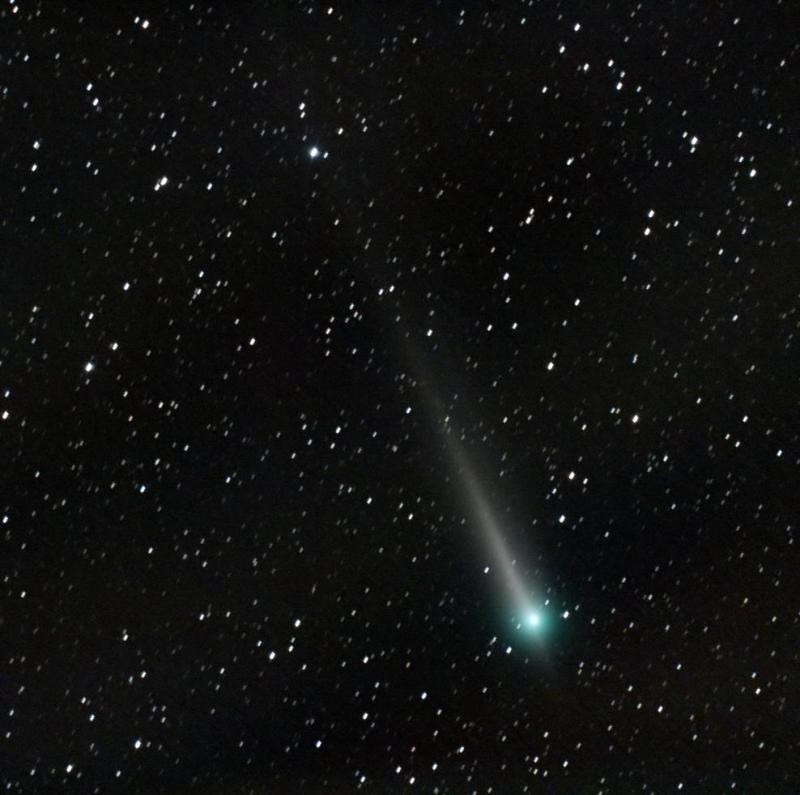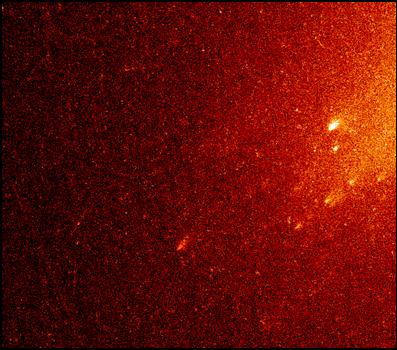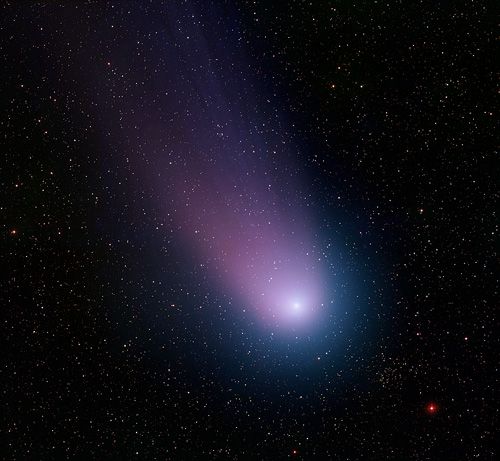|
|
|
Radio
Astronomical Observations of Comets Hale-Bopp, Linear, and Neat
Millimeter
observations of simple organic
molecules have been conducted towards comets Hale-Bopp, T7/Linear, and
Q4/Neat
with the Arizona Radio Observatory 12 m telescope on Kitt Peak, AZ.
Formaldehyde
was detected in all three comets with column densities on the order of
~2 x 1012
cm-2. The production rate (Q) of H2CO in Hale-Bopp is ~
1028 s-1, while Q
~ 1027 s-1 for Q4/Neat and Q ~ 7
x 1026 s-1 for T7/Linear. Methyl
cyanide and methanol were both
observed towards Hale-Bopp in March 1997. The
total column density derived for CH3CN from
a rotational
diagram analysis was 2.01 x 1012 cm-2 with a
rotational
temperature of ~200 K and Q = 7 x 1026
s-1. Five transitions of
methanol were observed over the period from March 10-21, 1997 with Ntot
~ 4 x 1014 cm-2 and Q
~ 3 x 1029 s-1. Comparisons
have been made between observed abundances in comets and in molecular
clouds. For example, in Hale-Bopp the
ratio of CH3OH/H2CO
is ~ 200, CH3CN/H2CO ~ 1, and CH3OH/CH3CN
~ 200, while for Orion-KL CH3OH/H2CO is ~ 2-21, CH3CN/H2CO
~ 25-271, and CH3OH/CH3CN ~ 12 (i.e. Lee et al.
2001).
Below, Comet Hale-Bopp.

Below, Comet T7/Linear.

Below, Comet S4/Linear fragmenting.

Below, Comet Q4/Neat

|





